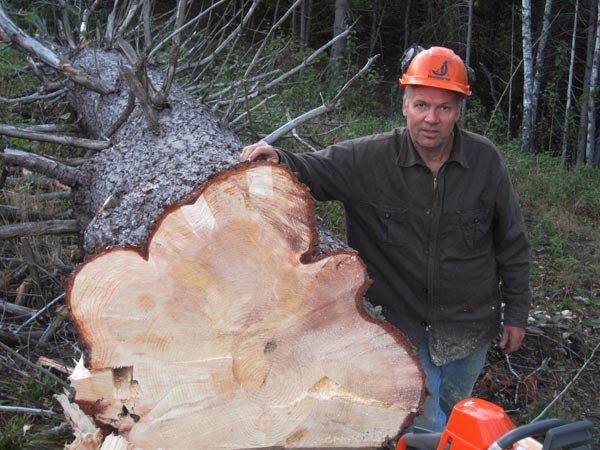Dave Allard grew up in Lyndonville, Vermont with a father who never said no. This meant something different back then. When Dave wanted to build a sugarhouse at age 12, his father didn’t say no. When he wanted to get into the firewood business at age 16 (100 cords, hand split), when he wanted to build a woodshop at 18, dad (and mom) went along with every entrepreneurial idea. In 1978, at age 19, he started his own cabinet shop which grew into Lyndon Furniture. Thirty-five years later, the company employs 85 people and does around $12-14 million in annual sales.
We sat down with Allard and Shawn Straffin, the head of product development and business development, and asked how Lyndon Furniture has been able to buck the downward trend wood furniture manufacturing has experienced in the recent past.
The U.S. furniture Industry has lost $50 billion in market share over the past few decades. How have you stayed viable?
Design is a key part to success. If you make a distinctive new piece of furniture with interesting material, it will be sought after by the consumer. This is true in every market, but especially true with furniture. The connection is another vital part. There’s the connection between the brand, the retailer, and the consumer. But there’s also a larger connection between the company and the place where it’s located. The local craftspeople. The local economy. The forest. These connections support each other.
One of the big points we’re always trumpeting is that, from a global environmental perspective, there’s a world of difference between a mature black cherry tree that’s selectively harvested in the Northeast and mahogany tree that’s illegally harvested in a Brazilian rainforest. Do your customers appreciate this?
People definitely appreciate the fact that our furniture is made from domestic sources. But it’s the local jobs angle they’re responding to, for the most part. “Made in the USA” still carries a lot of clout. On the environmental side, we promote the fact that our domestic wood is a managed, renewable resource and grown within a 500 mile radius of the factory, which cuts down on our carbon footprint. We’ve also made energy efficiency upgrades, and recycle all of our wood by-products.
How has technology changed over the years?
Today, our saw scans and reads the defects in a board in seconds. We use a 5-axis CNC machine that can cut any angle you need, even butterfly joints. We have a finish curing system that uses ultraviolet light that dries a lacquered finish in 5 minutes. In the old days it took 24 hours for a piece to dry, now it can come right off the line and into a box.
When you talk to people about innovative manufacturing, the term “lean” keeps coming up. Put this in laymen’s terms.
“Lean” essentially means no wasted material or movement. Every touch of every board is done in a way that adds the maximum amount of value. The old models of manufacturing were inflexible and inefficient. You made a product that you hoped people would buy, stored it in a warehouse, and hoped you had enough but not too much product on hand. Now we operate in a “just in time” model, with the manufacture of furniture scheduled into weeks of production. When an order comes in, we order the raw material just in time to make the piece. Each week we work on an order, then we’re done and on to the next order. No inventory. Even our packaging is lean. We used to have a warehouse full of cardboard boxes. Now boxes are made on site when we need them from one of three sizes of cardboard. No more storage.
What does marketing look like in the 21st century?
We’re in the digital age, where social media and printed QR codes [those little bar codes you often see in magazines] track engagement with the consumer – collect contact info, as well as location and demographic information. We use Prmot.it and its SharePower™ software to promote our product on websites and social media. [Editor’s note: Straffin is the creator and CEO of Prmot.it] And we’re cross promoting through the web with more than 200 retailers across the country. The Regional Wood Products Consortium is encouraging us to think outside the box while providing support and ideas for implementation. This is a big step for us to take in our marketing approach and one we think will pay off over time.
What hasn’t changed in the past 35 years?
The law of value is still at the heart of every business. Give more value than you take in payment. And technology will never trump good old-fashioned business sense. We purchased a million board feet of wood in 2008, when the housing market crashed and the mills needed to unload lumber. So we were buying the raw material low and selling the finished product to people who were least affected by the downturn. Business 101, but it definitely helped us get through the recession.


